Featured Articles
This Was A Boxing Clinic From Martinez

 A rematch would likely go to Martinez, possibly in even more dominant fashion, the writer says. What say you, readers? (Chris Farina-Top Rank)
A rematch would likely go to Martinez, possibly in even more dominant fashion, the writer says. What say you, readers? (Chris Farina-Top Rank)
Essentially, on Saturday night for eleven and a half rounds, we witnessed a cruiserweight being thoroughly outthought, outfought and outclassed by a super-middleweight, in as one-sided a contest for the middleweight championship of the world as you're ever likely to see. Despite the theatrical nature of the last minute and a half of the fight, which saw Sergio Martinez dropped from a manifold of left hooks up on the ropes shortly after being wobbled by a right hand as he was backing away, the fight wasn't the least bit competitive. Even upon rising to his feet, Martinez probably did enough to win the remaining moments of that round too, catching and hurting Chavez during an exchange with rights and lefts. As a result, Sergio Martinez now takes his record to 50-2-2 {28} while Chavez Jr, suffering the first loss of his career, is now at 46-1-1{32}.
It was said here before the fight that Sergio Martinez's superior hand and foot speed –and Chavez's lack of– would be the main difference between the two fighters and it was. Chavez, reduced to following his man around the ring for round after round,found it almost impossible to set himself in order to let his hands go, such was Martinez's quickness at redirecting his movement and in launching his offense. Constantly playing catch-up, Chavez was beaten to the punch throughout the night. You see, the problem for Chavez, as was also previously mentioned here, is that Chavez's style doesn't bode well on the score cards. In other words, unless he actually stops his opponent, he's always going to find it difficult to avoid being outworked across twelve rounds. Because Chavez doesn't throw punches until he's planted his feet once he's found his way inside, he allowed Sergio Martinez, who can throw punches on the move, to throw 908 punches, most of which came at him with Martinez on the back foot. With Martinez moving laterally, side to side and in and out, Chavez, a lineal attacker, couldn't get Martinez in front of him for long enough to put anything together. Hence, the notion of Chavez walking forward without punching and losing rounds. Of course there was a real deficit in hand speed, but the real difference maker in the fight was the gulf in foot speed. I lost track of the amount of times Chavez finally appeared to have his man pinned in the corner only for Martinez to turn him and start the process of walking Chavez onto shots all over again. Martinez's better footwork allowed him to always remain one step ahead of Chavez.
It wasn't just Martinez's superb foot work that gave Chavez problems either. Martinez is an extremely intelligent fighter, which is something that often gets lost when discussing his best attributes. Sergio's physical gifts would count for nothing if he didn't know how to apply them intelligently during a fight. That night, as early as the first round, Martinez made a conscious decision to throw a straight left lead to Chavez's body. While the British commentators correctly assumed that it was thrown to slow Chavez down as he would likely be applying more and more pressure as the fight progressed, they never mentioned it's main purpose. If you look at Chavez's guard in the first round, as both fighters were assessing one another, you'll notice that it was extremely high and tight. By throwing a fast, straight left lead into the pit of Chavez's stomach, Martinez forced him into slightly adjusting his guard to compensate. Once a fighter is unaware of what punch is coming next, it becomes increasingly difficult for them to concentrate on anything else. Once Martinez knew he had forced this sensation upon Chavez, we saw a carefully though out, well rounded attack consisting of straight lefts, right hooks and uppercuts. With Chavez's guard now slightly lowered, we saw the same straight left hand thrown up top and threaded through the guard. We also saw him setting traps with it too. Martinez often drifts left, gravitating towards his opponent's right hand, looking to draw it out so that he can simultaneously shift his weight back across to his right and land a straight left hand. Freddie Roach could be heard in the corner during the rounds, describing the direction of Martinez's movement. I wasn't, however, convinced that he was aware of the counter attacking intentions that were linked to it.
It wasn't just the straight left that worked a treat for Martinez either as he also had a lot of success using his jab, doubling and tripling up on it with great effect, even forcing his far bigger opponent onto the back foot as a result of it. Again, because Martinez wasn't just looking to maintain distance with it –he was also looking to hook off of it– the jab kept Chavez guessing and from getting comfortable with what Martinez was doing. As the fight wore on, Chavez had no answer for the speed and precision –not to mention the unpredictability– of Martinez's combinations neither. Martinez often ended his combinations with the right hook, as he was sliding off to his right and on the blindside of Chavez. Again, Chavez found himself constantly being turned and having to reset his feet.
Here's what I didn't see coming; Martinez spent far longer in the pocket than I could ever have imagined. And what's even more impressive is the fact that he was there on his own terms. Before the fight, many thought –myself included– that if any in-fighting were to take place, it would be Chavez who would have the better of it. Time after time, Martinez rewrote the script as he allowed the fight to take place at close quarters. Demoralizingly for Chavez, Martinez actually got the better of it. As Chavez looked to land his vaunted left hook, Martinez found a way to blunt it by pressing his right shoulder into Chavez's chest. By doing this, Chavez's left hook was landing around and away from Martinez's lower body. With the left hook to the body taken away, Martinez found a way to land his left uppercut to Chavez's head in close. Beforehand, nobody gave Martinez a chance on the inside and here he was, with his back to the ropes, actually getting the better of the in-fighting.
This really was a boxing clinic from Martinez. A display of inside/outside, offensive/defensive, back foot/front foot mastery {albeit against an overmatched opponent}. Martinez looked just as comfortable in taking the fight to Chavez as he was in countering him. His versatility on offense ranks among the best in professional boxing. I honestly don't think I've ever seen a 37 year-old fighter whose stamina levels are as high, nor have I seen anyone at that age who's as fast or as mobile as Sergio Martinez is. Going one step further, I believe Martinez may be the best offensive fighter in the sport or at least, the most aesthetically pleasing. Martinez varies the rhythm of his offense –punching and movement– in subtle ways that are difficult for opponents to track and time. He's so seamless when he does it, that his opponents don't know when or how he's doing it. His constant feinting, twitching, circling, trap setting style will continue to be a nightmare for any fighter in or around the middleweight division.
I'm sure most observers would welcome a rematch between the two, with the PR teams possibly playing on the famous Julio Cesar Chavez-Meldrick Taylor theme to spice things up. Ultimately, these two fights were night and day. Chavez Sr was hurting Taylor throughout the fight even though he was losing most of the rounds, whereas Martinez was dominating Chavez Jr in winning just about every second of every round without getting hurt or worn down in the process. Personally, I saw enough Saturday night that suggests to me that a rematch wouldn't look any different. Yes, Chavez hurt Martinez right at the end, but Martinez was obliging Chavez and giving the crowd what they wanted. My gut feeling here is that if he really wanted to, Martinez could have made the fight a lot easier–and a lot less exciting– on himself by staying on the outside. It wasn't necessary for him to do so, but I believe Martinez wanted to make a statement by choosing to go toe-to-toe with Chavez at times.
Unquestionably, this was a great night for boxing. We saw a great performance from Martinez {as well as resiliency}and a great final round. Chavez, who must be commended for his gutsy effort in almost turning things around late on, must be given credit for his chin, which is clearly as good as he said it was. All in all though, could Chavez really go one better next time? By allowing his hands to move more and by applying more intense pressure early on, Chavez could inadvertently give Martinez more counter-punching opportunities than he did last night. It's not beyond the realms of possibility to suggest that Martinez could go one better next time and actually stop Chavez. At the least, Martinez could make it a lot less compelling, which translates to him sticking and moving and avoiding the inside exchanges at all costs, something that wasn't at the top of his agenda Saturday night.
I can see why many would want to see it again, but for me, I saw all I needed to see. Sergio Martinez will always have the style and speed to trump Chavez Jr's size and strength.
As a thought experiment, ask yourself this. If Martinez was dropped in the first round instead of the last, would the calls for a rematch still be as strong? Using that train of thought then, you could say last night was a lot like the Joe Calzaghe-Roy Jones Jr fight in reverse.
And nobody ever wanted to see a sequel to that one-sided showing, did they?
Featured Articles
Avila Perspective, Chap. 323: Benn vs Eubank Family Feud and More

Next generation rivals Conor Benn and Chris Eubank Jr. carry on the family legacy of feudal warring in the prize ring on Saturday.
This is huge in British boxing.
Eubank (34-3, 25 KOs) holds the fringe IBO middleweight title but won’t be defending it against the smaller welterweight Benn (23-0, 14 KOs) on Saturday, April 26, at Tottenham Hotspur Stadium in London. DAZN will stream the Matchroom Boxing card.
This is about family pride.
The parents of Eubank and Benn actually began the feud in the 1990s.
Papa Nigel Benn fought Papa Chris Eubank twice. Losing as a middleweight in November 1990 at Birmingham, England, then fighting to a draw as a super middleweight in October 1993 in Manchester. Both were world title fights.
Eubank was undefeated and won the WBO middleweight world title in 1990 against Nigel Benn by knockout. He defended it three times before moving up and winning the vacant WBO super middleweight title in September 1991. He defended the super middleweight title 14 times before suffering his first pro defeat in March 1995 against Steve Collins.
Benn won the WBO middleweight title in April 1990 against Doug DeWitt and defended it once before losing to Eubank in November 1990. He moved up in weight and took the WBC super middleweight title from Mauro Galvano in Italy by technical knockout in October 1992. He defended the title nine times until losing in March 1996. His last fight was in November 1996, a loss to Steve Collins.
Animosity between the two families continues this weekend in the boxing ring.
Conor Benn, the son of Nigel, has fought mostly as a welterweight but lately has participated in the super welterweight division. He is several inches shorter in height than Eubank but has power and speed. Kind of a British version of Gervonta “Tank” Davis.
“It’s always personal, every opponent I fight is personal. People want to say it’s strictly business, but it’s never business. If someone is trying to put their hands on me, trying to render me unconscious, it’s never business,” said Benn.
This fight was scheduled twice before and cut short twice due to failed PED tests by Benn. The weight limit agreed upon is 160 pounds.
Eubank, a natural middleweight, has exchanged taunts with Benn for years. He recently avenged a loss to Liam Smith with a knockout victory in September 2023.
“This fight isn’t about size or weight. It’s about skill. It’s about dedication. It’s about expertise and all those areas in which I excel in,” said Eubank. “I have many, many more years of experience over Conor Benn, and that will be the deciding factor of the night.”
Because this fight was postponed twice, the animosity between the two feuding fighters has increased the attention of their fans. Both fighters are anxious to flatten each other.
“He’s another opponent in my way trying to crush my dreams. trying to take food off my plate and trying to render me unconscious. That’s how I look at him,” said Benn.
Eubank smiles.
“Whether it’s boxing, whether it’s a gun fight. Defense, offense, foot movement, speed, power. I am the superior boxer in each of those departments and so many more – which is why I’m so confident,” he said.
Supporting Bout
Former world champion Liam Smith (33-4-1, 20 KOs) tangles with Ireland’s Aaron McKenna (19-0, 10 KOs) in a middleweight fight set for 12 rounds on the Benn-Eubank undercard in London.
“Beefy” Smith has long been known as one of the fighting Smith brothers and recently lost to Eubank a year and a half ago. It was only the second time in 38 bouts he had been stopped. Saul “Canelo” Alvarez did it several years ago.
McKenna is a familiar name in Southern California. The Irish fighter fought numerous times on Golden Boy Promotion cards between 2017 and 2019 before returning to the United Kingdom and his assault on continuing the middleweight division. This is a big step for the tall Irish fighter.
It’s youth versus experience.
“I’ve been calling for big fights like this for the last two or three years, and it’s a fight I’m really excited for. I plan to make the most of it and make a statement win on Saturday night,” said McKenna, one of two fighting brothers.
Monster in L.A.
Japan’s super star Naoya “Monster” Inoue arrived in Los Angeles for last day workouts before his Las Vegas showdown against Ramon Cardenas on Sunday May 4, at T-Mobile Arena. ESPN will televise and stream the Top Rank card.
It’s been four years since the super bantamweight world champion performed in the US and during that time Naoya (29-0, 26 KOs) gathered world titles in different weight divisions. The Japanese slugger has also gained fame as perhaps the best fighter on the planet. Cardenas is 26-1 with 14 KOs.
Pomona Fights
Super featherweights Mathias Radcliffe (9-0-1) and Ezequiel Flores (6-4) lead a boxing card called “DMG Night of Champions” on Saturday April 26, at the historic Fox Theater in downtown Pomona, Calif.
Michaela Bracamontes (11-2-1) and Jesus Torres Beltran (8-4-1) will be fighting for a regional WBC super featherweight title. More than eight bouts are scheduled.
Doors open at 6 p.m. For ticket information go to: www.tix.com/dmgnightofchampions
Fights to Watch
Sat. DAZN 9 a.m. Conor Benn (23-0) vs Chris Eubank Jr. (34-3); Liam Smith (33-4-1) vs Aaron McKenna (19-0).
To comment on this story in the Fight Forum CLICK HERE
Featured Articles
Floyd Mayweather has Another Phenom and his name is Curmel Moton
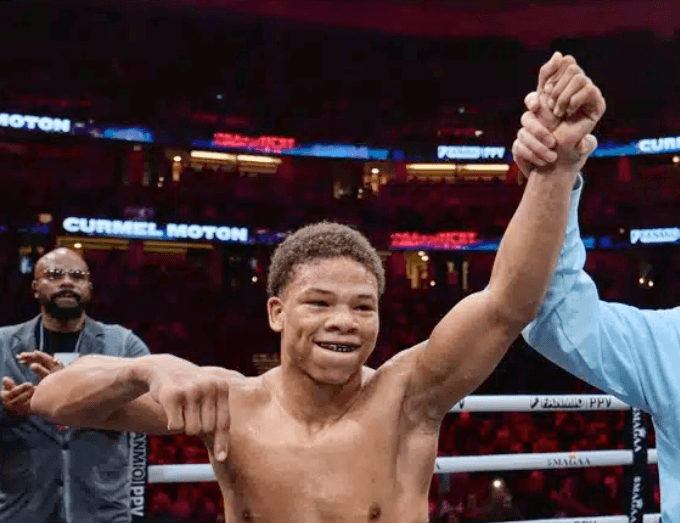
Floyd Mayweather has Another Phenom and his name is Curmel Moton
In any endeavor, the defining feature of a phenom is his youth. Philadelphia Phillies outfielder Bryce Harper was a phenom. He was on the radar screen of baseball’s most powerful player agents when he was 14 years old.
Curmel Moton, who turns 19 in June, is a phenom. Of all the young boxing stars out there, wrote James Slater in July of last year, “Curmel Moton is the one to get most excited about.”
Moton was born in Salt Lake City, Utah. His father Curtis Moton, a barber by trade, was a big boxing fan and specifically a big fan of Floyd Mayweather Jr. When Curmel was six, Curtis packed up his wife (Curmel’s stepmom) and his son and moved to Las Vegas. Curtis wanted his son to get involved in boxing and there was no better place to develop one’s latent talents than in Las Vegas where many of the sport’s top practitioners came to train.
Many father-son relationships have been ruined, or at least frayed, by a father’s unrealistic expectations for his son, but when it came to boxing, the boy was a natural and he felt right at home in the gym.
The gym the Motons patronized was the Mayweather Boxing Club. Curtis took his son there in hopes of catching the eye of the proprietor. “Floyd would occasionally drop by the gym and I was there so often that he came to recognize me,” says Curmel. What he fails to add is that the trainers there had Floyd’s ear. “This kid is special,” they told him.
It costs a great deal of money for a kid to travel around the country competing in a slew of amateur boxing tournaments. Only a few have the luxury of a sponsor. For the vast majority, fund raisers such as car washes keep the wheels greased.
Floyd Mayweather stepped in with the financial backing needed for the Motons to canvas the country in tournaments. As an amateur, Curmel was — take your pick — 156-7 or 144-6 or 61-3 (the latter figure from boxrec). Regardless, at virtually every tournament at which he appeared, Curmel Moton was the cock of the walk.
Before the pandemic, Floyd Mayweather Jr had a stable of boxers he promoted under the banner of “The Money Team.” In talking about his boxers, Floyd was understated with one glaring exception – Gervonta “Tank” Davis, now one of boxing’s top earners.
When Floyd took to praising Curmel Moton with the same effusive language, folks stood up and took notice.
Curmel made his pro debut on Sept. 30, 2023, at the T-Mobile Arena in Las Vegas on the undercard of the super middleweight title fight between Canelo Alvarez and Jermell Charlo. After stopping his opponent in the opening round, he addressed a flock of reporters in the media room with Floyd standing at his side. “I felt ready,” he said, “I knew I had Floyd behind me. He believes in me. I had the utmost confidence going into the fight. And I went in there and did what I do.”
Floyd ventured the opinion that Curmel was already a better fighter than Leigh Wood, the reigning WBA world featherweight champion who would successfully defend his belt the following week.
Moton’s boxing style has been described as a blend of Floyd Mayweather and Tank Davis. “I grew up watching Floyd, so it’s natural I have some similarities to him,” says Curmel who sparred with Tank in late November of 2021 as Davis was preparing for his match with Isaac “Pitbull” Cruz. Curmell says he did okay. He was then 15 years old and still in school; he dropped out as soon as he reached the age of 16.
Curmel is now 7-0 with six KOs, four coming in the opening round. He pitched an 8-round shutout the only time he was taken the distance. It’s not yet official, but he returns to the ring on May 31 at Mandalay Bay in Las Vegas where Caleb Plant and Jermall Charlo are co-featured in matches conceived as tune-ups for a fall showdown. The fight card will reportedly be free for Amazon Prime Video subscribers.
Curmel’s presumptive opponent is Renny Viamonte, a 28-year-old Las Vegas-based Cuban with a 4-1-1 (2) record. It will be Curmel’s first professional fight with Kofi Jantuah the chief voice in his corner. A two-time world title challenger who began his career in his native Ghana, the 50-year-old Jantuah has worked almost exclusively with amateurs, a recent exception being Mikaela Mayer.
It would seem that the phenom needs a tougher opponent than Viamonte at this stage of his career. However, the match is intriguing in one regard. Viamonte is lanky. Listed at 5-foot-11, he will have a seven-inch height advantage.
Keeping his weight down has already been problematic for Moton. He tipped the scales at 128 ½ for his most recent fight. His May 31 bout, he says, will be contested at 135 and down the road it’s reasonable to think he will blossom into a welterweight. And with each bump up in weight, his short stature will theoretically be more of a handicap.
For fun, we asked Moton to name the top fighter on his pound-for-pound list. “[Oleksandr] Usyk is number one right now,” he said without hesitation,” great footwork, but guys like Canelo, Crawford, Inoue, and Bivol are right there.”
It’s notable that there isn’t a young gun on that list. Usyk is 38, a year older than Crawford; Inoue is the pup at age 32.
Moton anticipates that his name will appear on pound-for-pound lists within the next two or three years. True, history is replete with examples of phenoms who flamed out early, but we wouldn’t bet against it.
To comment on this story in the Fight Forum CLICK HERE
Featured Articles
Arne’s Almanac: The First Boxing Writers Assoc. of America Dinner Was Quite the Shindig
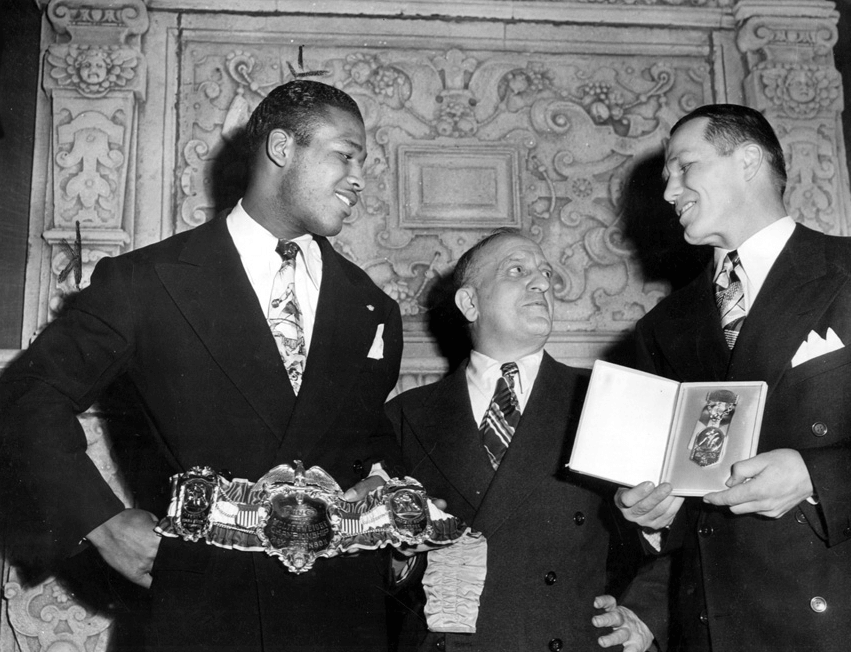
The first annual dinner of the Boxing Writers Association of America was staged on April 25, 1926 in the grand ballroom of New York’s Hotel Astor, an edifice that rivaled the original Waldorf Astoria as the swankiest hotel in the city. Back then, the organization was known as the Boxing Writers Association of Greater New York.
The ballroom was configured to hold 1200 for the banquet which was reportedly oversubscribed. Among those listed as agreeing to attend were the governors of six states (New York, New Jersey, Massachusetts, Pennsylvania, Connecticut, and Maryland) and the mayors of 10 of America’s largest cities.
In 1926, radio was in its infancy and the digital age was decades away (and inconceivable). So, every journalist who regularly covered boxing was a newspaper and/or magazine writer, editor, or cartoonist. And at this juncture in American history, there were plenty of outlets for someone who wanted to pursue a career as a sportswriter and had the requisite skills to get hired.
The following papers were represented at the inaugural boxing writers’ dinner:
New York Times
New York News
New York World
New York Sun
New York Journal
New York Post
New York Mirror
New York Telegram
New York Graphic
New York Herald Tribune
Brooklyn Eagle
Brooklyn Times
Brooklyn Standard Union
Brooklyn Citizen
Bronx Home News
This isn’t a complete list because a few of these papers, notably the New York World and the New York Journal, had strong afternoon editions that functioned as independent papers. Plus, scribes from both big national wire services (Associated Press and UPI) attended the banquet and there were undoubtedly a smattering of scribes from papers in New Jersey and Connecticut.
Back then, the event’s organizer Nat Fleischer, sports editor of the New York Telegram and the driving force behind The Ring magazine, had little choice but to limit the journalistic component of the gathering to writers in the New York metropolitan area. There wasn’t a ballroom big enough to accommodate a good-sized response if he had extended the welcome to every boxing writer in North America.
The keynote speaker at the inaugural dinner was New York’s charismatic Jazz Age mayor James J. “Jimmy” Walker, architect of the transformative Walker Law of 1920 which ushered in a new era of boxing in the Empire State with a template that would guide reformers in many other jurisdictions.
Prizefighting was then associated with hooligans. In his speech, Mayor Walker promised to rid the sport of their ilk. “Boxing, as you know, is closest to my heart,” said hizzoner. “So I tell you the police force is behind you against those who would besmirch or injure boxing. Rowdyism doesn’t belong in this town or in your game.” (In 1945, Walker would be the recipient of the Edward J. Neil Memorial Award given for meritorious service to the sport. The oldest of the BWAA awards, the previous recipients were all active or former boxers. The award, no longer issued under that title, was named for an Associated Press sportswriter and war correspondent who died from shrapnel wounds covering the Spanish Civil War.)
Another speaker was well-traveled sportswriter Wilbur Wood, then affiliated with the Brooklyn Citizen. He told the assembly that the aim of the organization was two-fold: to help defend the game against its detractors and to promote harmony among the various factions.
Of course, the 1926 dinner wouldn’t have been as well-attended without the entertainment. According to press dispatches, Broadway stars and performers from some of the city’s top nightclubs would be there to regale the attendees. Among the names bandied about were vaudeville superstars Sophie Tucker and Jimmy Durante, the latter of whom would appear with his trio, Durante, (Lou) Clayton, and (Eddie) Jackson.
There was a contraction of New York newspapers during the Great Depression. Although empirical evidence is lacking, the inaugural boxing writers dinner was likely the largest of its kind. Fifteen years later, in 1941, the event drew “more than 200” according to a news report. There was no mention of entertainment.
In 1950, for the first time, the annual dinner was opened to the public. For $25, a civilian could get a meal and mingle with some of his favorite fighters. Sugar Ray Robinson was the Edward J. Neil Award winner that year, honored for his ring exploits and for donating his purse from the Charlie Fusari fight to the Damon Runyon Cancer Fund.
There was no formal announcement when the Boxing Writers Association of Greater New York was re-christened the Boxing Writers Association of America, but by the late 1940s reporters were referencing the annual event as simply the boxing writers dinner. By then, it had become traditional to hold the annual affair in January, a practice discontinued after 1971.
The winnowing of New York’s newspaper herd plus competing banquets in other parts of the country forced Nat Fleischer’s baby to adapt. And more adaptations will be necessary in the immediate future as the future of the BWAA, as it currently exists, is threatened by new technologies. If the forthcoming BWAA dinner (April 30 at the Edison Ballroom in mid-Manhattan) were restricted to wordsmiths from the traditional print media, the gathering would be too small to cover the nut and the congregants would be drawn disproportionately from the geriatric class.
Some of those adaptations have already started. Last year, Las Vegas resident Sean Zittel, a recent UNLV graduate, had the distinction of becoming the first videographer welcomed into the BWAA. With more and more people getting their news from sound bites, rather than the written word, the videographer serves an important function.
The reporters who conducted interviews with pen and paper have gone the way of the dodo bird and that isn’t necessarily a bad thing. A taped interview for a “talkie” has more integrity than a story culled from a paper and pen interview because it is unfiltered. Many years ago, some reporters, after interviewing the great Joe Louis, put words in his mouth that made him seem like a dullard, words consistent with the Sambo stereotype. In other instances, the language of some athletes was reconstructed to the point where the reader would think the athlete had a second job as an English professor.
The content created by videographers is free from that bias. More of them will inevitably join the BWAA and similar organizations in the future.
Photo: Nat Fleischer is flanked by Sugar Ray Robinson and Tony Zale at the 1947 boxing writers dinner.
-
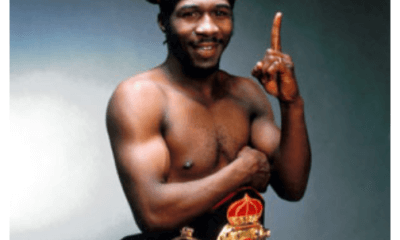
 Featured Articles4 weeks ago
Featured Articles4 weeks agoBoxing Odds and Ends: The Wacky and Sad World of Livingstone Bramble and More
-
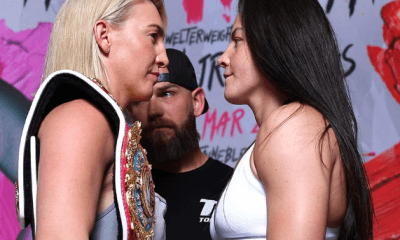
 Featured Articles4 weeks ago
Featured Articles4 weeks agoAvila Perspective, Chap. 319: Rematches in Las Vegas, Cancun and More
-

 Featured Articles4 weeks ago
Featured Articles4 weeks agoRingside at the Fontainebleau where Mikaela Mayer Won her Rematch with Sandy Ryan
-
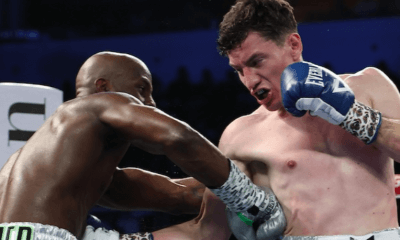
 Featured Articles4 weeks ago
Featured Articles4 weeks agoWilliam Zepeda Edges Past Tevin Farmer in Cancun; Improves to 34-0
-
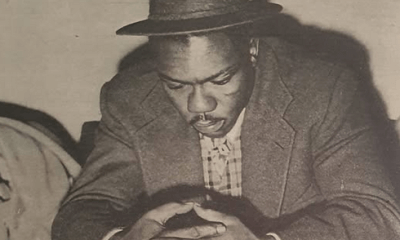
 Featured Articles3 weeks ago
Featured Articles3 weeks agoHistory has Shortchanged Freddie Dawson, One of the Best Boxers of his Era
-
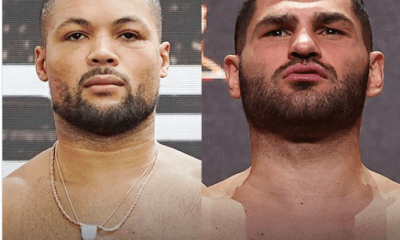
 Featured Articles3 weeks ago
Featured Articles3 weeks agoAvila Perspective, Chap. 320: Women’s Boxing Hall of Fame, Heavyweights and More
-
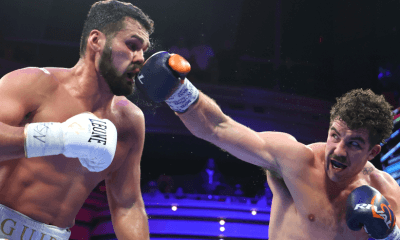
 Featured Articles3 weeks ago
Featured Articles3 weeks agoResults and Recaps from Las Vegas where Richard Torrez Jr Mauled Guido Vianello
-
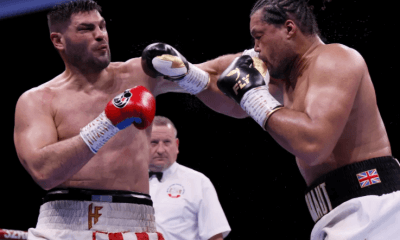
 Featured Articles3 weeks ago
Featured Articles3 weeks agoFilip Hrgovic Defeats Joe Joyce in Manchester















